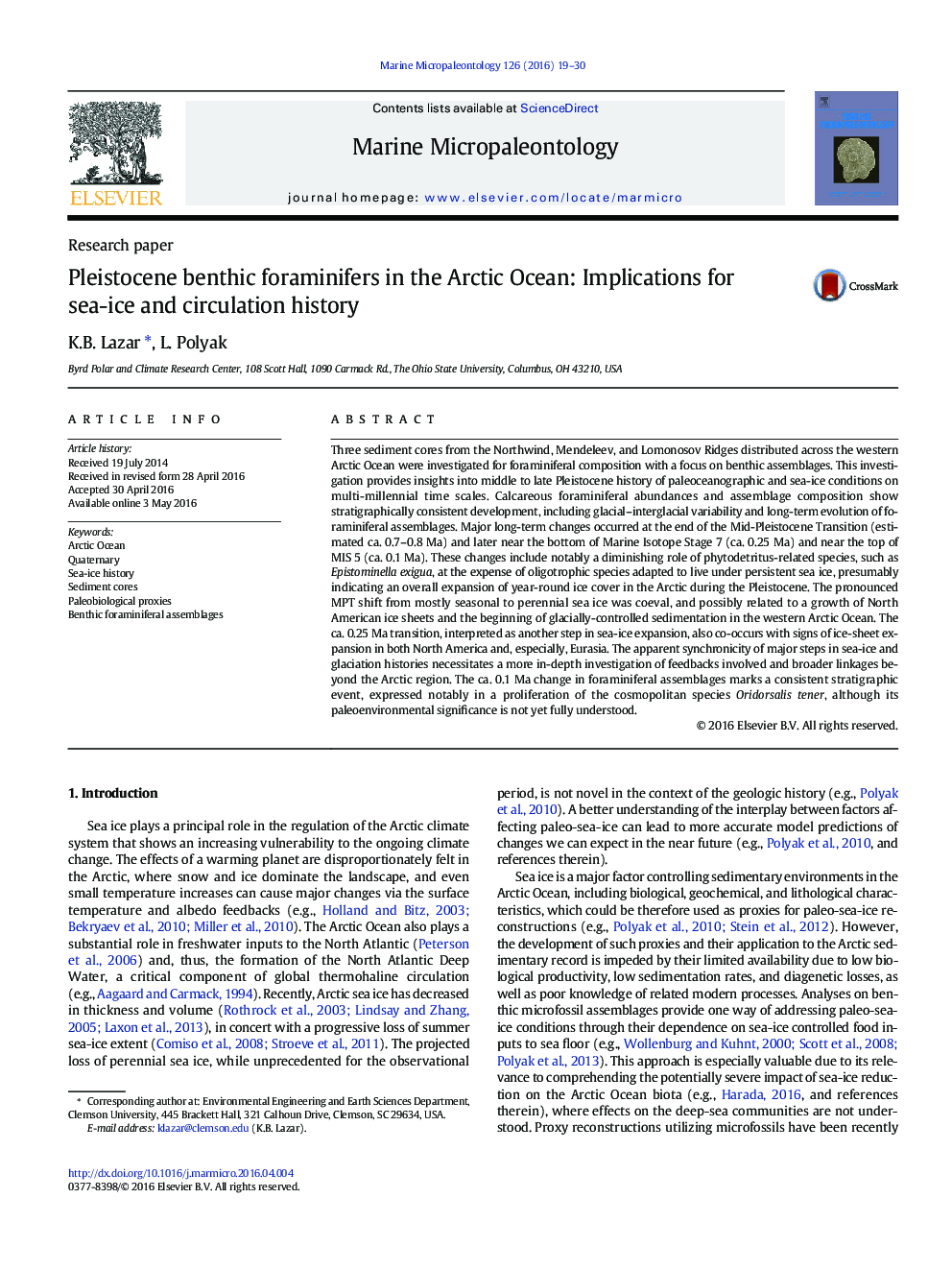| کد مقاله | کد نشریه | سال انتشار | مقاله انگلیسی | نسخه تمام متن |
|---|---|---|---|---|
| 4748776 | 1642159 | 2016 | 12 صفحه PDF | دانلود رایگان |
• Calcareous foraminiferal records from the western Arctic Ocean were described.
• Sea-ice conditions are reconstructed based on foraminiferal assemblages.
• Major step changes occur at ca. 0.7–0.8, 0.25 and 0.1 million years ago.
• Perennial Arctic sea ice expanded during Pleistocene.
Three sediment cores from the Northwind, Mendeleev, and Lomonosov Ridges distributed across the western Arctic Ocean were investigated for foraminiferal composition with a focus on benthic assemblages. This investigation provides insights into middle to late Pleistocene history of paleoceanographic and sea-ice conditions on multi-millennial time scales. Calcareous foraminiferal abundances and assemblage composition show stratigraphically consistent development, including glacial–interglacial variability and long-term evolution of foraminiferal assemblages. Major long-term changes occurred at the end of the Mid-Pleistocene Transition (estimated ca. 0.7–0.8 Ma) and later near the bottom of Marine Isotope Stage 7 (ca. 0.25 Ma) and near the top of MIS 5 (ca. 0.1 Ma). These changes include notably a diminishing role of phytodetritus-related species, such as Epistominella exigua, at the expense of oligotrophic species adapted to live under persistent sea ice, presumably indicating an overall expansion of year-round ice cover in the Arctic during the Pleistocene. The pronounced MPT shift from mostly seasonal to perennial sea ice was coeval, and possibly related to a growth of North American ice sheets and the beginning of glacially-controlled sedimentation in the western Arctic Ocean. The ca. 0.25 Ma transition, interpreted as another step in sea-ice expansion, also co-occurs with signs of ice-sheet expansion in both North America and, especially, Eurasia. The apparent synchronicity of major steps in sea-ice and glaciation histories necessitates a more in-depth investigation of feedbacks involved and broader linkages beyond the Arctic region. The ca. 0.1 Ma change in foraminiferal assemblages marks a consistent stratigraphic event, expressed notably in a proliferation of the cosmopolitan species Oridorsalis tener, although its paleoenvironmental significance is not yet fully understood.
Journal: Marine Micropaleontology - Volume 126, June 2016, Pages 19–30
